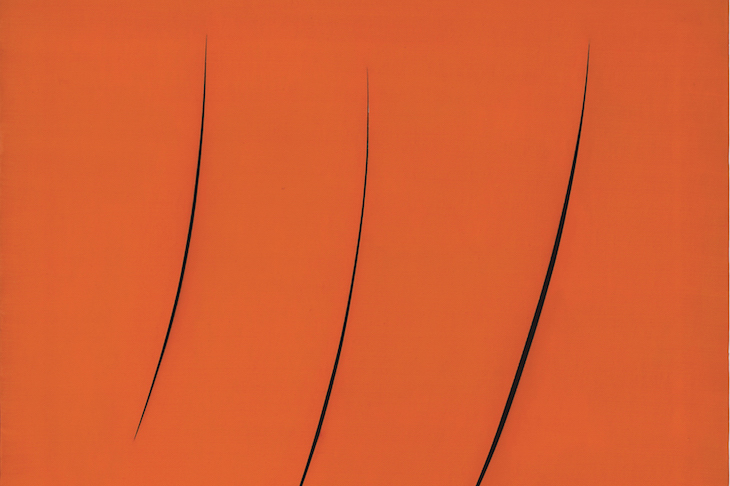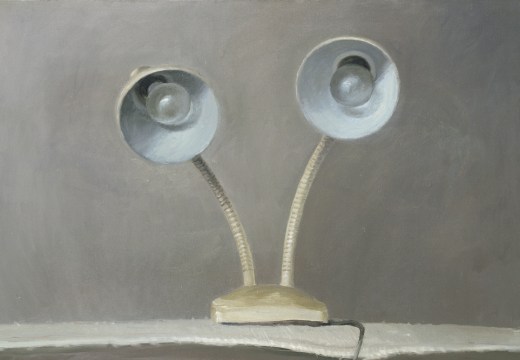In his slashed paintings of the 1950s, Fontana sought to synthesise movement, space and colour. This exhibition also includes earlier sculptures and ceramics, as well as two of the immersive neon installations from the 1960s. Find out more from the Met’s website.
Preview the exhibition below | See Apollo’s Picks of the Week here

Portrait of Teresita (1940), Lucio Fontana. © 2018 Fondazione Lucio Fontana/Artists Rights Society (ARS), New York/SIAE, Rome
Fontana didn’t use a canvas for the first time until 1949, when he was in his early 50s. He was born in Argentina in 1896, and learned the elements of sculpture from his father; by the 1930s he had established himself as a sculptor in Milan, studying at the Brera Academy and later joining the Abstraction-Création movement. His works of this period are in touch with Surrealism, often dealing in archetypes: classicised depictions of warriors or women – pictured here with the tessellated form of an ancient mosaic – or the imagery of the ocean.

Spatial Environment in Red Light (1967/2019), Lucio Fontana. © 2018 Fondazione Lucio Fontana/Artists Rights Society (ARS), New York/SIAE, Rome
Fontana regarded his practice as a kind of experimental philosophy, as much as an art form. In the late 1940s, he experienced a series of breakthroughs that led to what he called ‘Spatialism’ – an attempt to rethink the traditional relationship between the artwork, whether painting or sculpture, and the space surrounding it. Almost two decades before the beginnings of installation art, Fontana began creating his Ambienti – immersive environments, in which neon lights and abstract forms responded to the walls and ceiling of the exhibition space in which they were situated.

Spatial Concept, The Quanta (1959), Lucio Fontana. © 2018 Fondazione Lucio Fontana/Artists Rights Society (ARS), New York/SIAE, Rome
Fontana reversed the direction of his spatial enquiries as the 1950s progressed; instead of trying to include the exhibition space in the work of art, he began poking holes and slicing cuts – or tagli – into the canvas, so that the art object began to incorporate the space around it.

Spatial Concept, Expectations (1959), Lucio Fontana. © 2018 Fondazione Lucio Fontana/Artists Rights Society (ARS), New York/SIAE, Rome
By the end of the decade, Fontana had hit upon the final, characteristic form of his investigations – a brightly coloured, monochrome canvas, with one or more lines cut cleanly down the centre. In 1968, the artist said: ‘My discovery was the hole and that’s it. I am happy to go to the grave after such a discovery.’











![Masterpiece [Re]discovery 2022. Photo: Ben Fisher Photography, courtesy of Masterpiece London](https://apollo-magazine.com/wp-content/uploads/2022/07/MPL2022_4263.jpg)
‘A revolutionary flame burned bright within him’: David Bindman (1940–2025)